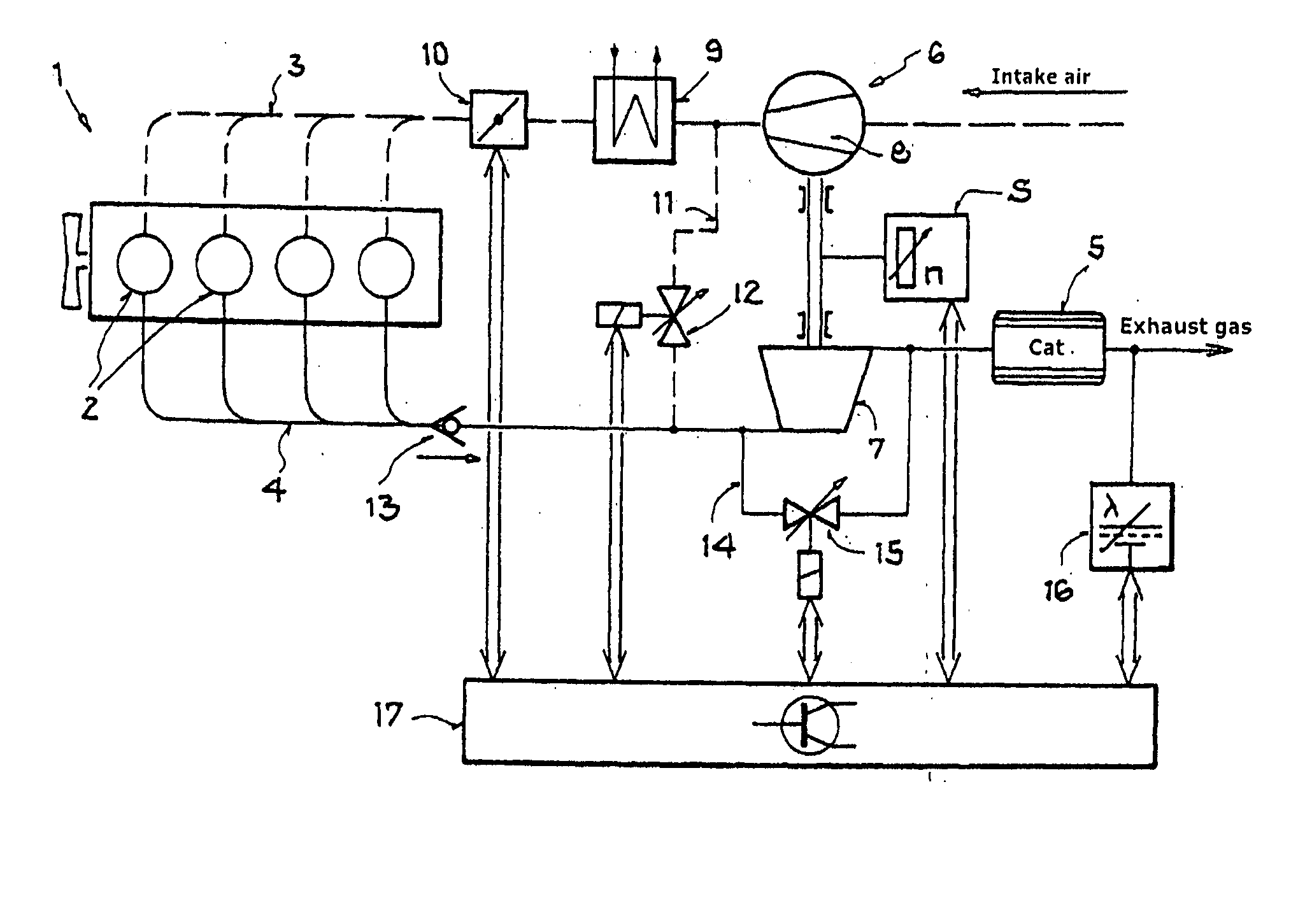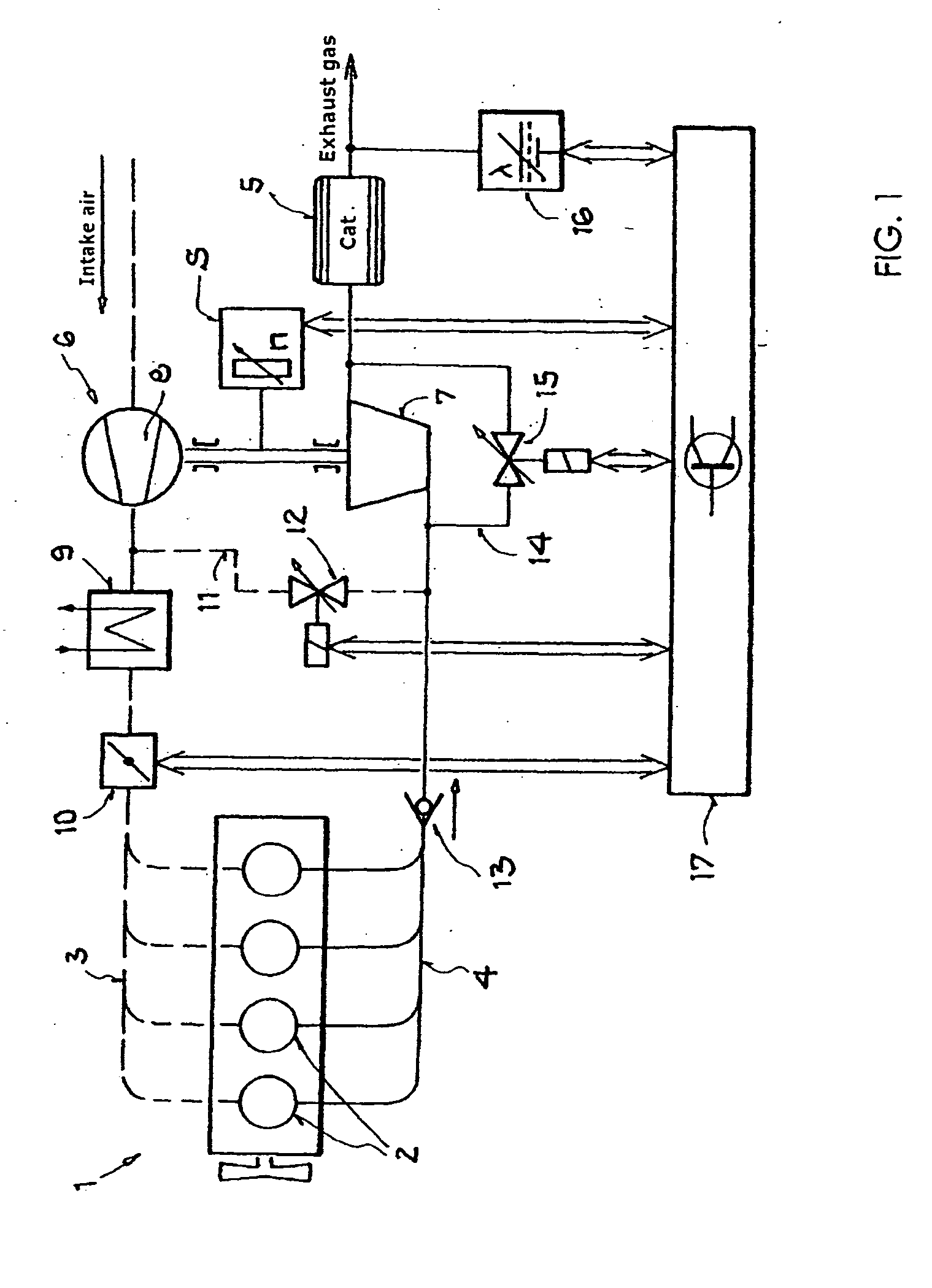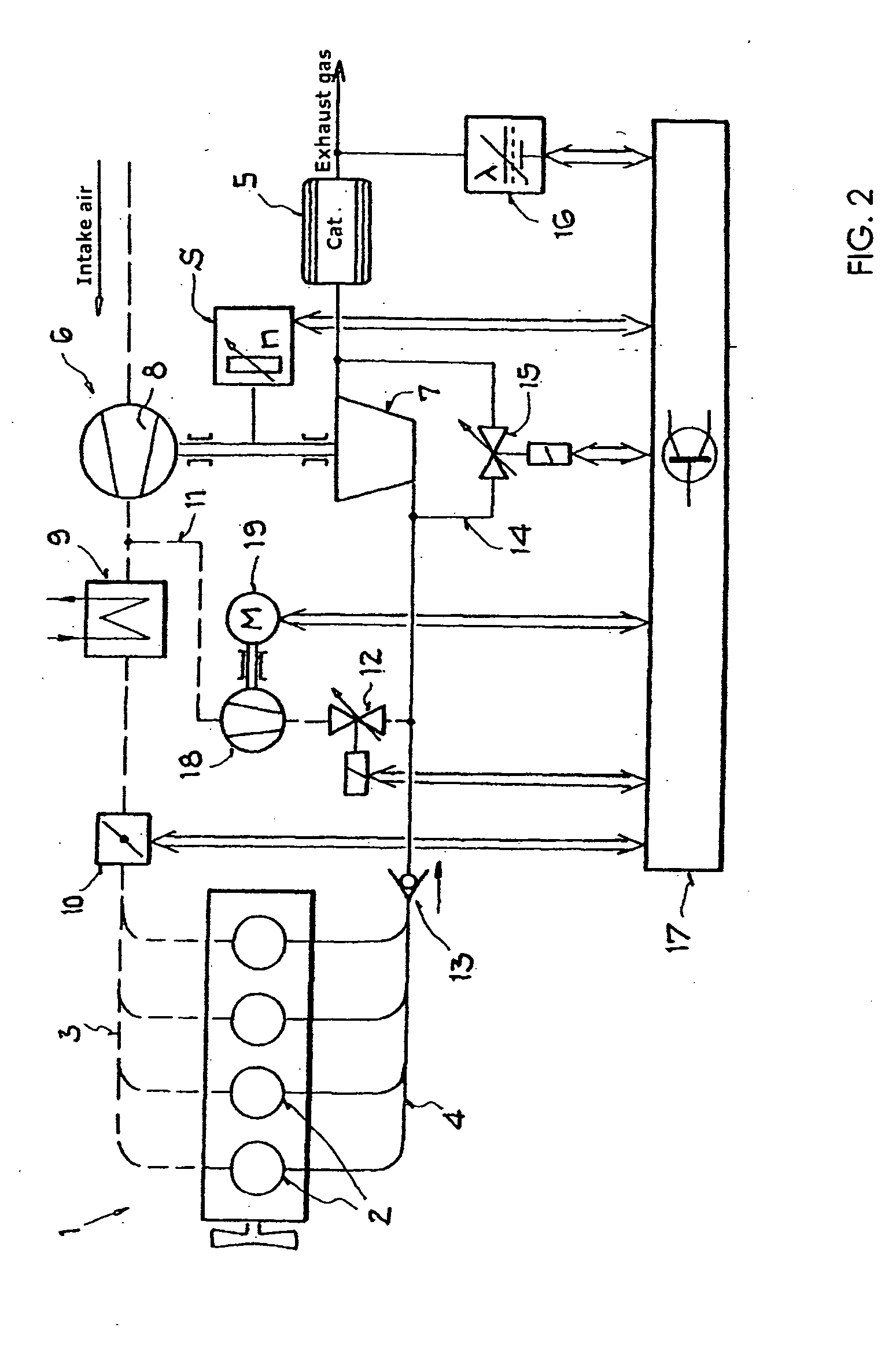Internal combustion engine with exhaust-gas turbocharger and secondary air injection
a technology of exhaust gas and turbocharger, which is applied in the direction of machines/engines, electrical control, mechanical equipment, etc., can solve the problems of high cost of air mass sensors, for example based on hot-film strain gauges, and sensitive to soiling
- Summary
- Abstract
- Description
- Claims
- Application Information
AI Technical Summary
Benefits of technology
Problems solved by technology
Method used
Image
Examples
Embodiment Construction
[0015]FIG. 1 shows an internal combustion engine 1 having a plurality of combustion cylinders 2, which is supplied with charge air via an intake section 3, indicated by dashed lines, and fuel is added to the charge air with internal or external mixture formation. This ignitable mixture is ignited in the combustion cylinders 2, and the combustion products are discharged from the combustion cylinders via the exhaust system 4, which is illustrated by solid lines, and fed to a catalytic converter 5 for catalytic aftertreatment. An exhaust-gas turbocharger 6 has its turbine 7 in the flow path of the exhaust system and its compressor 8 in the flow path of the intake air. The compressed intake air can optionally be cooled using a charge-air cooler 9. For charge-air control, a throttle valve 10 is provided downstream of the charge-air compressor 8 and the charge-air cooler 9. A secondary-air line 11 branches off from the intake section downstream of the charge-air compressor 8 and leads, vi...
PUM
 Login to View More
Login to View More Abstract
Description
Claims
Application Information
 Login to View More
Login to View More - R&D
- Intellectual Property
- Life Sciences
- Materials
- Tech Scout
- Unparalleled Data Quality
- Higher Quality Content
- 60% Fewer Hallucinations
Browse by: Latest US Patents, China's latest patents, Technical Efficacy Thesaurus, Application Domain, Technology Topic, Popular Technical Reports.
© 2025 PatSnap. All rights reserved.Legal|Privacy policy|Modern Slavery Act Transparency Statement|Sitemap|About US| Contact US: help@patsnap.com



